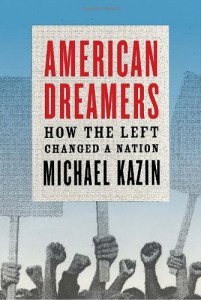10/31 – “War Against War” ARC seminar with Michael Kazin
The Advanced Research Collaborative
“War Against War: Explaining The Rise, Failure, and Legacy of the American Peace Movement, 1914-1918”
October 31, 2013
4:00 pm to 6:00 pm
Room 5318
Michael Kazin is a Professor in the Department of History at Georgetown University. He is an expert in U.S. politics and social movements, 19th and 20th centuries. His most recent book is “American Dreamers: How the Left Changed a Nation” (Knopf, 2011), which was named a Best Book of 2011 by The New Republic, Newsweek, Daily Beast, and The Progressive. He is editor of “Dissent“, a leading magazine of the American left since 1954. He is now at work on “War against War: The Rise, Defeat, and Legacy of the American Peace Movement, 1914-1918,” under contract with Simon and Schuster.
The book addresses a subject that many historians of the United States may assume they know quite enough about already. Despite the wealth of scholarship, historians outside the rather tiny sub-field of peace studies do not appreciate how many Americans opposed the war, strongly and consistently, and took part, on a variety of levels, in agitating for peace. World War I is a war that no one celebrates. In Europe, many still mourn it. The movement which tried to stop the United States from contributing to this thirty-year debacle ought to be better understood, if not honored. Furthermore, the American peace movement, unlike its counterparts in Europe, has never really been analyzed as a totality. Existing studies focus either on congressional opposition to preparedness and the war itself, or on protests by labor and the left, or on peace networks which are too easily dismissed as quixotic. To understand the most important questions about this movement — what it achieved, why it failed, and what its legacy has been — one needs to examine when and how these different groups and individuals worked together and how their combined, if not always coordinated, efforts influenced the course of U.S. policy and politics – before, during, and after the declaration of war in 1917.
For more information, please read the paper “War Against War: Explaining The Rise, Failure, and Legacy of the American Peace Movement, 1914-1918” by clicking on the following link: KazinARCPaper




